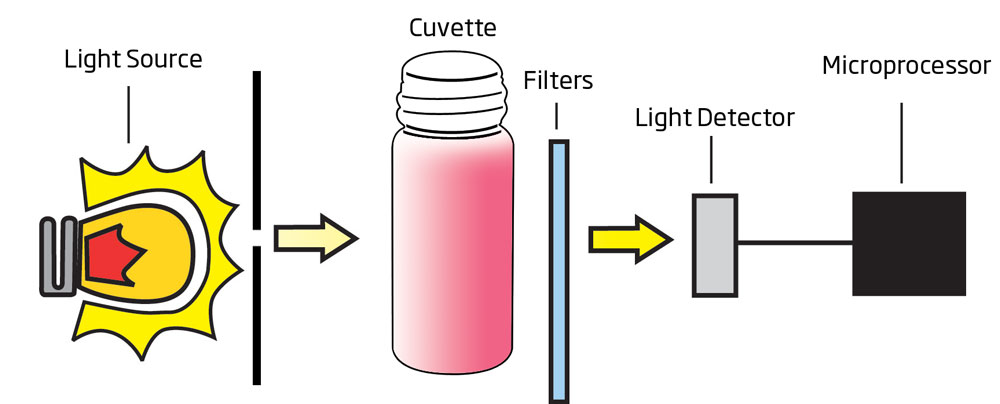The HI83746 photometer is for the determination of reducing sugars in wine. Hanna's photometers feature an advanced optical system; the combination of a special tungsten lamp, a narrow band interference filter, and silicon photodetector ensure accurate photometric readings every time. The exclusive cuvette locking system ensures that the cuvette is inserted into the measurement cell in the same position every time to maintain a consistent path length.
Features at-a-glance
Built-in timer - Display of time remaining before a measurement is taken. Ensures that all readings are taken at the appropriate reaction intervals for the test being performed.
Zero key - A simple press of the zero key on the face of the meter will account for the color and imperfections in the wine sample before reagent addition.
Auto shut-off - Automatic shut-off after 15 minutes of non-use when the meter is in measurement mode. Prevents wastage of batteries in the event the meter is accidentally left on.
Battery status indicator - Indicates the amount of battery life left.
Error messages - Messages on display alerting to problems including no light, inverted sample, and out of range.
Units of measure - Appropriate unit of measure is displayed along with reading.

Sugar is an essential component in the production of wine. During alcoholic fermentation, yeast consume sugars found in the grape juice, or must, and converts it to ethyl alcohol and carbon dioxide. In the case of certain styles of wine such as semi-sweet or dessert wines, some sugar is allowed to remain post-fermentation. This residual sugar can serve to provide a sweeter character to the final blend or play a role in microbial stability.
The primary fermentable sugars found in grapes are glucose and fructose. These two simple sugars are also known as reducing sugars because they contain functional groups capable of being oxidized under certain conditions. After reaction with excess alkaline cupric tartrate (Fehling reagents), the content of reducing sugars can be determined colorimetrically. The Fehling method is not an exact determination but an index of the reducing sugar concentration, because the reaction depends upon the amount and type of reducing sugars present. When the reducing sugar content is known at the beginning of fermentation, the potential alcohol degree can be estimated by multiplying the sugar concentration (in g/L) by 0.06.
The HI83746 uses the Fehling method to determine the concentration of reducing sugars less than 50.00 g/L (ppt). When Fehling’s A and Fehling’s B Solutions react with a sample containing reducing sugars, the sample will undergo a color change; the greater the concentration, the deeper the color. The associated color change is then colorimetrically analyzed according to the Beer-Lambert Law. This principle states that light is absorbed by a complementary color, and the emitted radiation is dependent upon concentration. For determination of reducing sugars, a narrow band interference filter at 610 nm (orange) allows only orange light to be detected by the silicon photodetector and omits all other visible light emitted from the tungsten lamp. As the change in color of the reacted sample increases, absorbance of the specific wavelength of light also increases, while transmittance decreases.
Typical content of reducing sugars in must and wine |
Must | sweet must | 20 to 25 % | 200 to 250 g/L |
normal | 10 to 20 % | 100 to 200 g/L |
in fermentation | 4 to 12.5 % | 40 to 125 g/L |
Wine | sweet | 2.5 to 12.5 % | 25 to 125 g/L |
semi-sweet | 0.8 to 2.5 % | 8 to 25 g/L |
almost dry | 0.2 to 0.8 % | 2 to 8 g/L |
dry | 0 to 0.2 % | 0 to 2 g/L |

